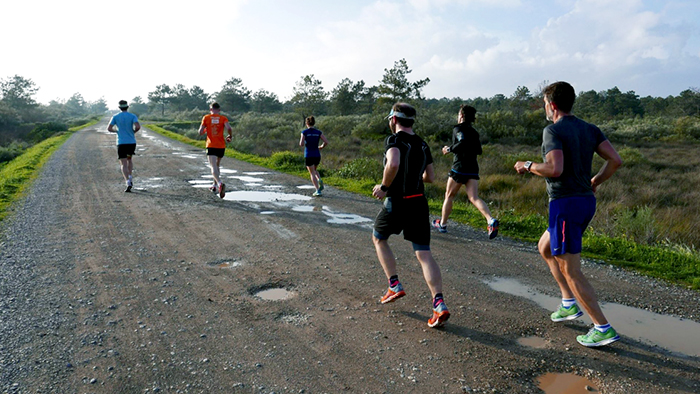Overtraining occurs when the body experiences persistent and deep fatigue as a result of too strenuous physical exercise. This phenomenon is well-documented in the professional sport setting, though it is a completely different story among amateurs, who generally combine their demanding training with various professional and family duties.
The typical cause of overtraining is down to the intensity of stress being too great for the present recovery and adaptation potential of our body. Looking from a physiological perspective, sports training is a huge stress factor for our body, though it is not the only one. In the professional sport, overtraining naturally relates to an excessive training burden, but when it comes to amateurs, there are much more potential sources of overstress.
Overtraining may occur in many areas: muscular, osteoarticular, metabolic, and nervous systems, and indirectly also in the endocrine or immune systems. We should also distinguish between overtraining and tiredness, as the latter is an inherent part of training (or just simple laziness).
In the case of professional endurance athletes, the most popular mix seems to be a combination of total exhaustion of the muscular, metabolic and endocrine systems. It may be a blessing in disguise that each of these aspects can be relatively easily measured through biochemical blood tests, determining the level of creatine kinase, testosterone or cortisol, or by performing orthostatic tests or regular monitoring of the resting heart rate.
Breakdowns of other systems often actually protect us against overtraining; frequent infections or stress fractures simply force us to reduce the training burden. When it comes to amateurs, the most vulnerable is the nervous system, and the problem itself is more complex. The blame does not lie only with sports, as it is just a small part of a larger picture.
If an amateur trains hard 14 hours a week, it can be easily calculated that 22 hours a day are left for other activities. Are two hours of physical activity a day really that much? For people who live a sedentary lifestyle it may be the case, but as homo sapiens we are perfectly fitted to face bigger challenges (so don’t panic).
On the other hand, current symptoms specific to overtraining are experienced even by those who are generally not keen on sports. Chronic fatigue, decreased motivation, sleep or eating disorders more often result from the day-to-day accumulation of various stimuli and insufficient recovery, rather than from two hours of physical activity in 24 hours.
Of course, if your day is fully activity-packed, then adding two hours of training can lead to a total disaster in each and every area of your life, with family life at the forefront. And that is why prevention is a basis to combat overtraining:
- Your training plan must take into account professional work, family and social duties, as well as your individual recovery potential.
- Focus on building habits that foster doing sports: from the right amount of sleep, through good quality diet, to considering recovery treatment as an integral part of training.
- None of the training programs will work if you do not include the time your body needs to recover and adapt. On the micro-scale, this means easy workouts or days without training. On the macro-scale, this is the transition period after the season or the main start. But, let’s face it, if you train less than 10 hours a week, the transition period is mostly aimed at “refreshing” your head.
- Great attention is paid to the training methods, while recovery methods are not widely discussed (especially when it comes to the mental side). The relevant supplies of mental energy are needed to train and compete at a high level. We live in an era of constant availability, intense stream of information and the pushiness of social media. The ability to switch off and just do nothing is key to high-quality mental recovery.
- You can overdo things with too much training, you can neglect recovery and regeneration, but the nail in the coffin may also be a too exploitative starting policy – especially in the case of amateurs! A really huge effort during the start of a race is just one thing, but very often the true disaster comes a day after the start: Several hours of loitering by the finish line, several hours in the car travelling, poor sleep and several hours behind a desk on Monday. Some people can manage it for even two seasons, but so far I have not met any athlete who would make it for much longer. Remember that things don’t just disappear, so sooner or later you will have to pay for a short-sighted starting policy.
- The last piece of the puzzle is monitoring both the physical and mental overall condition of the body. It is worthwhile performing blood tests at least once a quarter, monitoring the resting heart rate and general well-being, as well as the level of training motivation.



